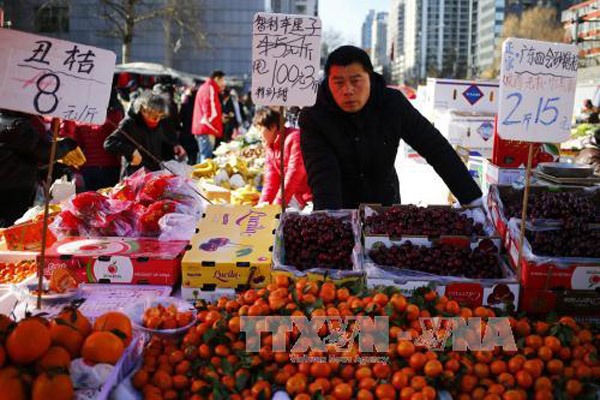 bizhub
bizhub

The first ship carrying fruits from ASEAN countries docked at the Fangcheng Gang Port in South China’s Guangxi Zhuang autonomous region on Monday, marking the opening of a new shipping route for transporting fruit between China and the regional bloc.
 |
| A fruit stall in Beijing, China. The newly-opened shipping route for transporting fruit is expected to increase the trade between China and the regional bloc. — Photo EPA/VNA |
HÀ NỘI — The first ship carrying fruits from ASEAN countries docked at the Fangcheng Gang Port in South China’s Guangxi Zhuang autonomous region on Monday, marking the opening of a new shipping route for transporting fruit between China and the regional bloc.
The route, running from HCM City in Việt Nam to Guangxi Zhuang, is operated by four ships of the Chinese COSCO Shipping Corporation, a State-owned enterprise based in Shanghai. Each ship can carry 1,100 standard containers.
Currently just one ship sails on the route each week, but this is set to increase to two or three times by the end of this year.
The new route is expected to increase fruit exports from ASEAN countries to China, and facilitate China’s export of farm produce and fruit to the ASEAN market.
From the Fangcheng Gang Port in southern Guangxi Province, which borders Việt Nam, the fruit will be transported via rail or road to wholesale farm produce markets in major cities like Beijing and Shanghai.
In an article posted on the freshplaza.com website last month, Shihe Sun, director of the Guangxi Inspection and Quarantine Bureau, was quoted as saying the province had become a main channel for fruit trade with ASEAN countries.
The province imported 920,100 tonnes of fruit worth $515 million in 2016.
Sun said Guangxi had good transport connections with Việt Nam, making it one of the most convenient channels between China and the ASEAN market. The province has opened the Pingxiang land port, the Guilin airport and the Fangcheng Gang waterway to facilitate the export and import of fruits.
According to the General Department of Customs, Việt Nam earned $309.9 million from the export of vegetables and fruit to China in the first two months of this year, a year-on-year increase of 31 per cent. China accounts for 73.6 per cent of Việt Nam’s total export value of vegetables and fruit.
Việt Nam has imported fruit and vegetables worth $31 million from China during the period, accounting for 19 per cent of its total vegetable and fruit imports.
The volume of Chinese fruit exports is expected to increase rapidly as Việt Nam implements its commitment of zero per cent tariffs under the ASEAN-China Free Trade Agreement.
Under the commitment, Việt Nam will abolish taxes or reduce it to zero per cent for 90 per cent of existing tariff lines by the end of 2018, while the remaining 10 per cent will see further reductions by 2020. — VNS